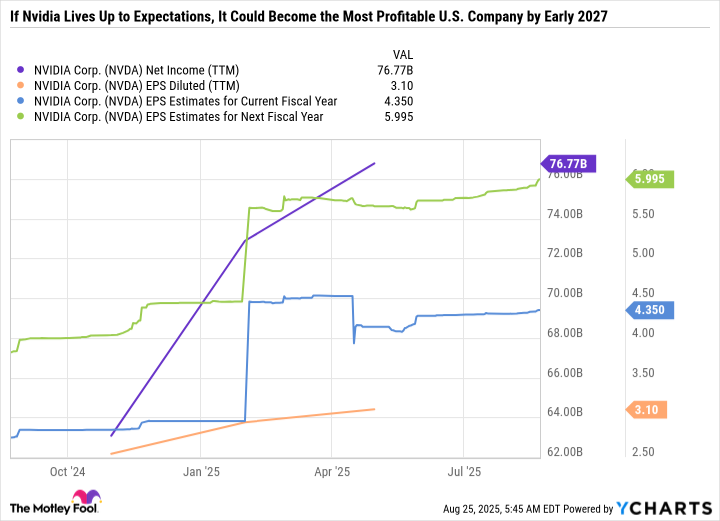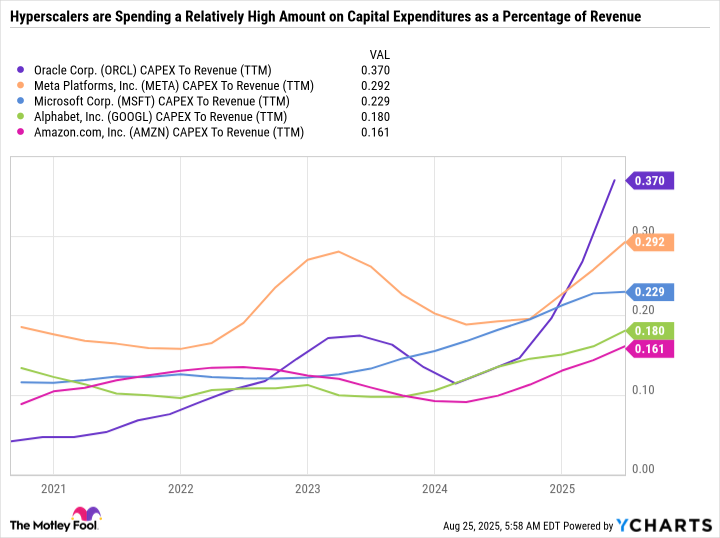2 Stocks That May Crush the “Magnificent Seven”
These stocks already are climbing, but they have plenty of room to run.
The Magnificent Seven is more than just a Western from the 1960s. Today, the term refers to the group of innovative companies that have driven stock market gains in recent years. They are technology names you probably know well, from Nvidia to Meta Platforms, and they’re all involved in the high-growth area of artificial intelligence (AI). These players have helped the S&P 500 climb in the double-digits this year, too, and even reach record levels.
But the Magnificent Seven aren’t the only game in town, and two other stocks in particular may give them a run for their money over the next five years, as AI infrastructure spending soars and customers seek capacity for their AI workloads. Right now, these two AI stocks are charging forward and already have outperformed the Magnificent Seven so far this year — but this movement may not be over. Let’s check out the two players that may crush the Magnificent Seven in the years to come.

Image source: Getty Images.
1. CoreWeave
CoreWeave (CRWV -3.32%) has climbed more than 250% since its market launch earlier this year, but that doesn’t mean it’s used up all of its fuel. The company may just be getting started, and that’s because it offers up a service in high demand today — and into the future. I’m talking about AI infrastructure capacity.
CoreWeave, thanks to its 250,000 graphics processing units (GPUs), has a lot of computing power to offer — and customers can easily rent it as needed, even on an hourly basis. This means they don’t have to invest in purchasing costly GPUs but still can access the power they need for the training and inferencing of their models, for example.
To make the picture even sweeter, Nvidia plays a key role in the CoreWeave story. The chip giant holds a 7% stake in the company and recently pledged to buy any unused capacity through 2032 — this removes a great deal of risk from CoreWeave stock.
Finally, CoreWeave’s revenue has been exploding higher, growing more than 400% in the first quarter from the year-earlier period — and more than tripling in the latest quarter year over year. Considering the great need for AI capacity to power the training of AI and its application in the real world, the company should continue to see strong demand — and this may send the stock to greater gains than those of the Magnificent Seven.
2. Broadcom
Broadcom (AVGO -5.90%) stock has advanced nearly 50% so far this year, but this company, too, could keep marching higher in the coming years as cloud service providers focus on scaling up AI infrastructure. The company is a networking giant, known for thousands of products found in a variety of places — from smartphones to data centers.
But this data center business has driven growth as the AI boom picked up momentum. Customers are turning to Broadcom for networking solutions, needed to connect the many compute nodes that power AI workloads across data centers. Broadcom is an expert here and has seen its Tomahawk switches and Jericho routers fly off the shelves.
The company also represents a future winner in the area of computing power as it designs AI accelerators, known as XPUs — but doesn’t necessarily compete with chip giant Nvidia. The XPU is a custom accelerator, made for specific purposes while Nvidia’s chips are high-powered for general use. This makes it easier for Broadcom to carve out market share, serving a customer’s specific needs and offering a product that may be complementary to Nvidia’s. In the recent quarter, Broadcom announced a $10 billion order for XPUs — and analysts say the customer is top AI lab OpenAI.
The AI business has resulted in significant revenue gains in recent quarters — for example, in the latest one, Broadcom reported AI revenue growth of 63% to $5.2 billion. And this trend could continue if Nvidia chief Jensen Huang is right: He expects AI infrastructure spending to climb to $3 trillion or $4 trillion by the end of the decade, and Broadcom clearly could benefit from this stage of the AI boom. And that suggests this stock may crush the Magnificent Seven players as this AI infrastructure story unfolds.
Adria Cimino has no position in any of the stocks mentioned. The Motley Fool has positions in and recommends Meta Platforms and Nvidia. The Motley Fool recommends Broadcom. The Motley Fool has a disclosure policy.











